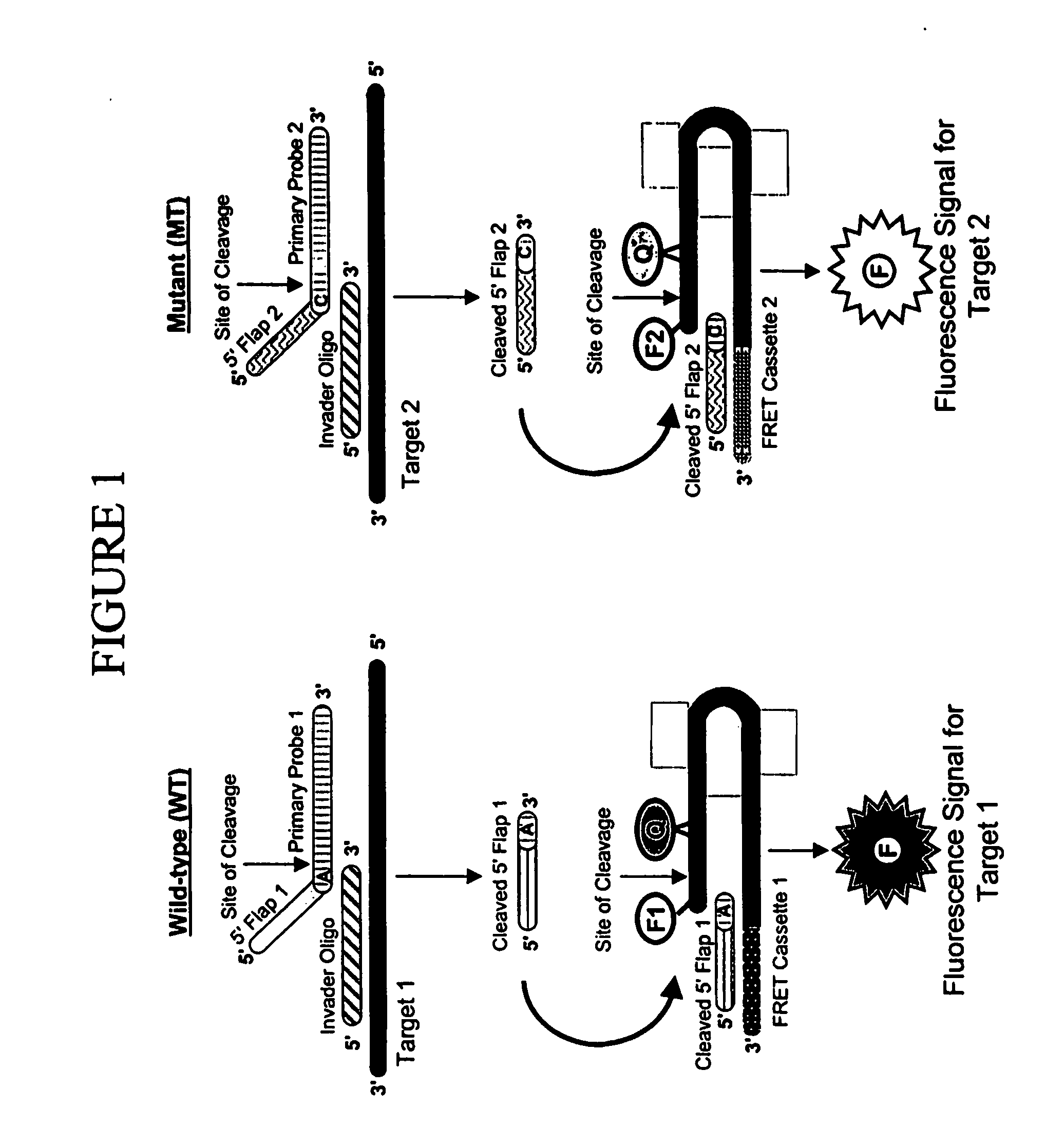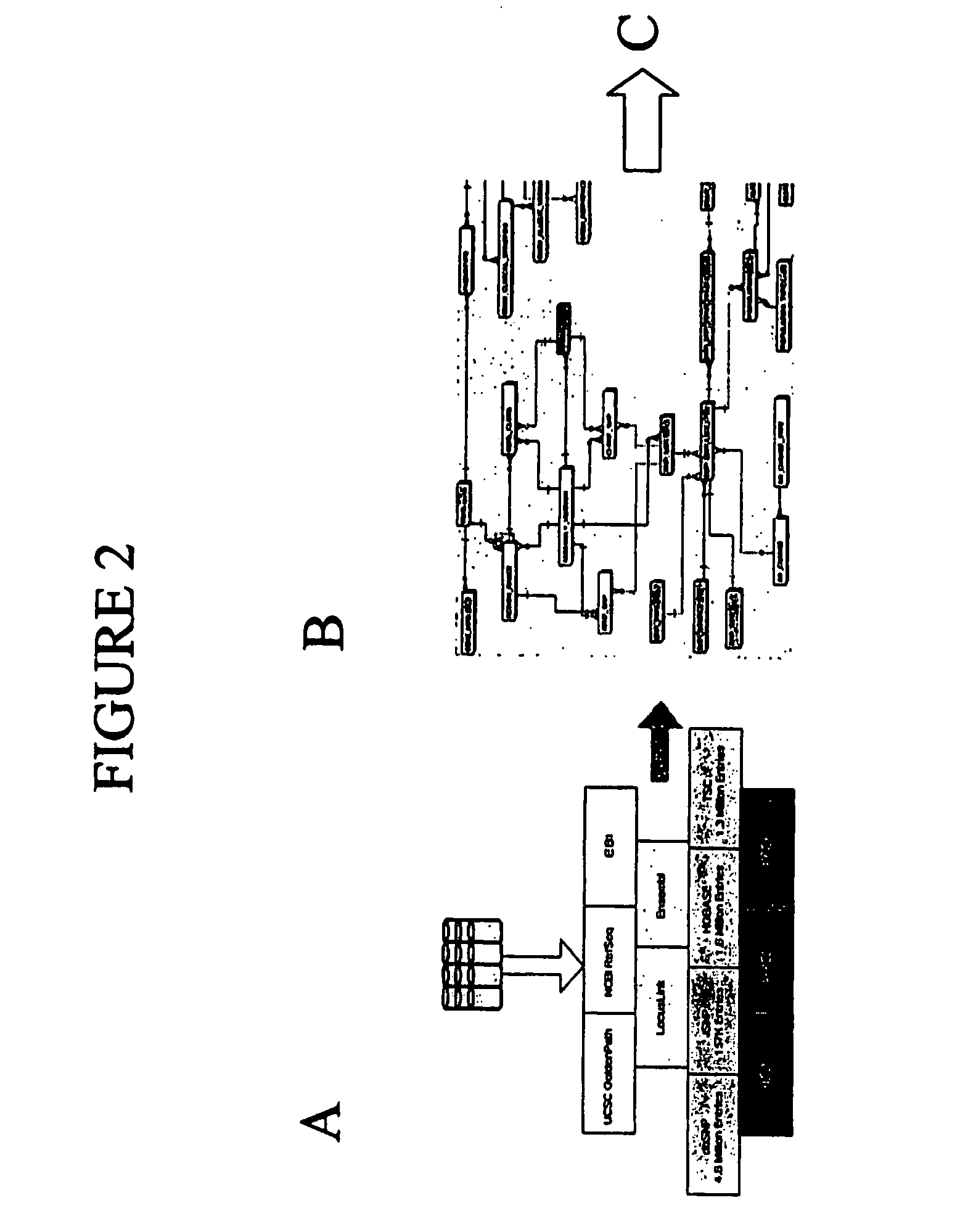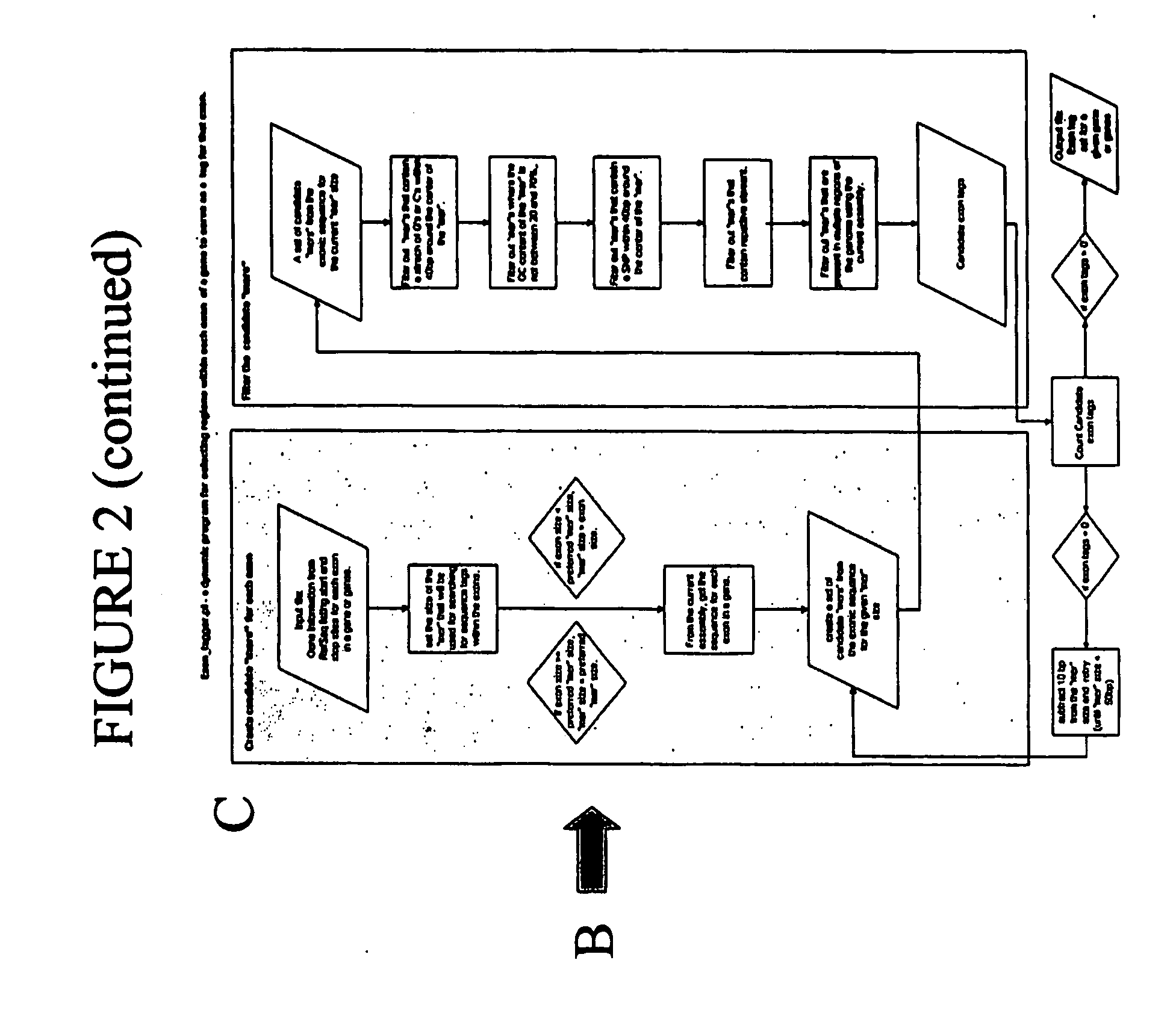Assays for the direct measurement of gene dosage
a technology of gene dosage and amplification, applied in the direction of microbiological testing/measurement, biochemistry apparatus and processes, etc., can solve the problems of large block size, inability to detect aneuploidy, translocation or duplication of large blocks of genetic material, and numerous limitations of classic karyotyping. , to achieve the effect of reducing the number of errors
- Summary
- Abstract
- Description
- Claims
- Application Information
AI Technical Summary
Benefits of technology
Problems solved by technology
Method used
Image
Examples
experimental examples
[0136] The following examples are provided to illustrate certain embodiments of the invention without being intended to limit the invention to the specific applications described.
[0137] In the disclosure that follows, the following abbreviations apply: Ex. (Example); Fig. (Figure); ° C. (degrees Centigrade); g (gravitational field); hr (hour); min (minute); olio (oligonucleotide); r×n (reaction); vol (volume); w / v (weight to volume); v / v (volume to volume); BSA (bovine serum albumin); CTAB (cetyltrimethylammonium bromide); HPLC (high pressure liquid chromatography); DNA (deoxyribonucleic acid); p (plasmid); ml (microliters); ml (milliliters); mg (micrograms); mg (milligrams); M (molar); mM (milliMolar); mM (microMolar); pmoles (picomoles); amoles (attomoles); zmoles (zeptomoles); nm (nanometers); kdal (kilodaltons); OD (optical density); EDTA (ethylene diamine tetra-acetic acid); FITC (fluorescein isothiocyanate); SDS (sodium dodecyl sulfate); NaPO4 (sodium phosphate); NP-40 (Nonid...
example 1
Measurement of Gene Dosage Using the INVADER Assay
A. DNA Samples
[0138] Aneuploidy cell lines were obtained from the Coriell Institute for Medical Research. DNA was isolated using the Gentra Systems, Inc. (Minneapolis, Minn.) PUREGENE DNA Purification Kit (for manual purification) or AUTOPURE LS (for automated purification). The following cell lines were obtained:
TABLE 1Cell lines and their genotypes.DescriptionKaryotypeRepository #Cell TypeTrisomy 1848, XXX, +18GM03623FibroblastTrisomy 1847, XX, +18GM02422AmnioticfluidTrisomy 1847, XX, +18AG12614FibroblastTrisomy 1347, XX, +13AG12070AminoticfluidTrisomy 1347, XY, +13GM03330FibroblastTrisomy 1347, XY, +13GM02948AFibroblastTrisomy 2147, XY, +21AG09394LymphoblastTrisomy 2147, XX, +21AG13429LymphoblastTrisomy 2147, XX, +21AG10098LymphoblastMonosomy 21peripheral bloodNA01201(DNA)Lymphoblastlymphocyte sample:(provided as46, XX, −21,DNA)+t(21; 21),lymphoblast culturewas 45, XX, −21XYY Syndrome47, XYYGM01250AFibroblastXYY Syndrome47, X...
example 2
Use of The EXON TAGGER Program to Identify Target Regions
A. Target Sequences in the DSCR Gene on Chromosome 21
[0160] The EXON TAGGER approach was used to identify appropriate, unique 50-mer sequences in the DSCR 6 (Downs Critical Region) gene, on chromosome 21. An initial analysis was done using the June, 2002 human genome assembly. INVADER assays were designed to this sequence with the probe and INVADER oligonucleotides comprising SEQ ID NOs: 15 and 114, respectively. Assays were carried out as described in Example 1.
[0161] While these oligonucleotide sets appeared to detect the targeted sequence in the DSCR 6 gene, when a sample known to be trisomic for chromosome 21 was tested, the INVADER assay failed to detect a significant increase in signal, as would be expected in the presence of an additional copy of the gene (FIG. 10). It was discovered that the DSCR6 50 mer sequence was part of a SINE (Alu) repeat and was highly homologous to regions on several different chromosomes. ...
PUM
| Property | Measurement | Unit |
|---|---|---|
| Fraction | aaaaa | aaaaa |
| Fraction | aaaaa | aaaaa |
| Length | aaaaa | aaaaa |
Abstract
Description
Claims
Application Information
 Login to View More
Login to View More - R&D
- Intellectual Property
- Life Sciences
- Materials
- Tech Scout
- Unparalleled Data Quality
- Higher Quality Content
- 60% Fewer Hallucinations
Browse by: Latest US Patents, China's latest patents, Technical Efficacy Thesaurus, Application Domain, Technology Topic, Popular Technical Reports.
© 2025 PatSnap. All rights reserved.Legal|Privacy policy|Modern Slavery Act Transparency Statement|Sitemap|About US| Contact US: help@patsnap.com



